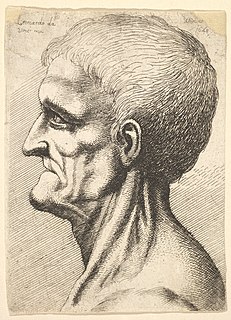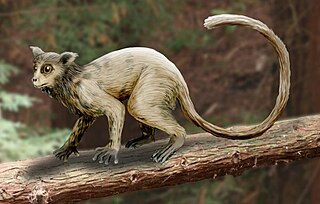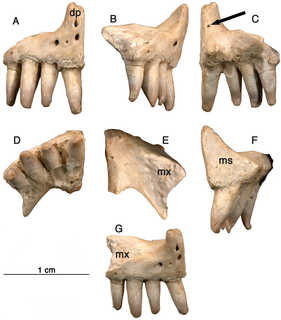Related Research Articles

Dentition pertains to the development of teeth and their arrangement in the mouth. In particular, it is the characteristic arrangement, kind, and number of teeth in a given species at a given age. That is, the number, type, and morpho-physiology of the teeth of an animal.

Hyperdontia is the condition of having supernumerary teeth, or teeth that appear in addition to the regular number of teeth. They can appear in any area of the dental arch and can affect any dental organ. The opposite of hyperdontia is hypodontia, where there is a congenital lack of teeth, which is a condition seen more commonly than hyperdontia. The scientific definition of hyperdontia is "any tooth or odontogenic structure that is formed from tooth germ in excess of usual number for any given region of the dental arch." The additional teeth, which may be few or many, can occur on any place in the dental arch. Their arrangement may be symmetrical or non-symmetrical.

Rhynchocephalia is an order of lizard-like reptiles that includes only one living species, the tuatara of New Zealand. Despite its current lack of diversity, during the Mesozoic rhynchocephalians were a diverse group including a wide array of morphologically distinct forms. The oldest record of the group is dated to the Middle Triassic around 238 to 240 million years ago, and they had achieved a worldwide distribution by the Early Jurassic. Most rhynchocephalians belong to the group Sphenodontia ('wedge-teeth'). Their closest living relatives are lizards and snakes in the order Squamata, with the two orders being grouped together in the superorder Lepidosauria.

Dental surgery is any of a number of medical procedures that involve artificially modifying dentition; in other words, surgery of the teeth, gums and jaw bones.

Thrinaxodon is an extinct genus of cynodonts, most commonly regarded by its species T. liorhinus which lived in what are now South Africa and Antarctica during the Early Triassic. Thrinaxodon lived just after the Permian–Triassic mass extinction event, its survival during the extinction may have been due to its burrowing habits.

The alveolar process or alveolar bone is the thickened ridge of bone that contains the tooth sockets on the jaw bones. The structures are covered by gums as part of the oral cavity.

Toothlessness, or edentulism, is the condition of having no teeth. In organisms that naturally have teeth, it is the result of tooth loss.
Tritylodontidae is an extinct family of small to medium-sized, highly specialized mammal-like cynodonts, bearing several mammalian traits like erect limbs, endothermy and details of the skeleton. They were the last-known family of the non-mammaliaform synapsids, persisting into the Early Cretaceous.
Planocephalosaurus is an extinct genus of rhynchocephalian. Fossils of the genus were found in the Tecovas Formation of Texas and the Magnesian Conglomerate of England.

Necrolemur is a small bodied omomyid with body mass estimations ranging from 114 grams to 346 grams. Necrolemur’s teeth feature broad basins and blunt cusps, suggesting their diet consisted of mostly soft fruit, though examination of microwear patterns suggests that populations from lower latitudes also consumed insects and gums. While they do not sport a true tooth comb like modern lemurs, microwear patterns on their lower incisors suggest they engaged in fur grooming behaviors. Like tarsiers, Necrolemur had large, front-facing, close set eyes and were likely nocturnal. Analysis of cranial and postcranial fossils by paleontologists suggest members of the family Omomyidae, including the genus Necrolemur, possessed highly specialized adaptations for leaping.

Dentin dysplasia (DD) is a rare genetic developmental disorder affecting dentine production of the teeth, commonly exhibiting an autosomal dominant inheritance that causes malformation of the root. It affects both primary and permanent dentitions in approximately 1 in every 100,000 patients. It is characterized by presence of normal enamel but atypical dentin with abnormal pulpal morphology. Witkop in 1972 classified DD into two types which are Type I (DD-1) is the radicular type, and type II (DD-2) is the coronal type. DD-1 has been further divided into 4 different subtypes (DD-1a,1b,1c,1d) based on the radiographic features.

Pleurodont is a form of tooth implantation common in reptiles of the order Squamata, as well as in at least one temnospondyl. The labial (cheek) side of pleurodont teeth are fused (ankylosed) to the inner surface of the jaw bones which host them. The lingual (tongue) side of pleurodont teeth are not attached to bone, and instead are typically held in place by connective ligaments. This contrasts with thecodont implantation, in which the teeth are set in sockets and surrounded by bone on all sides.

Solenodonsaurus is an extinct genus of reptiliomorphs that lived in what is now Czech Republic, during the Westphalian stage.

Labidosaurikos is a genus of extinct captorhinid anapsid reptile that lived around 279 to 272 million years ago during Kungurian age of the lower Permian. The American paleontologist John Willis Stovall first described Labidosaurikos in 1950, naming it "Labidosaurus like" for the striking similarity of the holotype skull of his specimen to the cranial anatomy of another captorhinid Labidosaurus hamatus. Labidosaurus or generally called "lipped lizard" is another genus of the family Captorhinidae whose name is derived from the Greek for "forceps lizard" based on τσιμπίδα and σαυρος ("lizard")
Cargninia is an extinct genus of basal lepidosauromorph from the Late Triassic of Brazil. The type and only known species is Cargninia enigmatica. It is known from the holotype UFRGS PV 1027 T, a partial left dentary found in what is now Faxinal do Soturno, Rio Grande do Sul, southern Brazil, in the geopark Paleorrota. This locality is from the middle section of the Norian-age Caturrita Formation. Cargninia was named by José Fernando Bonaparte, César Leandro Schultz, Marina Bento Soares and Agustín G. Martinelli in 2010. The generic name honors Daniel Cargnin, a Brazilian priest and fossil collector, and the specific name means “enigmatic”, in reference to its uncertain phylogenetic placement.

Arisierpeton is an extinct genus of synapsids from the Early Permian Garber Formation of Richards Spur, Oklahoma. It contains a single species, Arisierpeton simplex.

Polymorphodon is an extinct genus of archosauriform reptile from the Middle Triassic of Germany. The only known species is Polymorphodon adorfi, discovered in Lower Keuper deposits at a quarry in Eschenau, Germany. Polymorphodon is notable for its heterodont dentition, with long and conical premaxillary teeth followed by thin maxillary teeth with large serrations. Maxillary teeth near the back of the mouth are short and leaf-shaped, similar to some living and extinct reptiles with a herbivorous or omnivorous diet. This may suggest that Polymorphodon had some reliance on plants in its diet, a rarity among basal archosauriforms, most of which are carnivores.

Ankylorhiza is an extinct genus of toothed whale that lived in what is now the United States during the Oligocene epoch, between 29 and 23.5 million years ago. The type and only known species is A. tiedemani, though two fossil skeletons may represent an additional, second species within the genus. Ankylorhiza was about 4.8 meters (16 ft) long, with a long, robust skull bearing conical teeth that were angled forwards at the tip of the snout.
Ictidosaurus was a therapsid genus found in the Abrahamskraal Formation of South Africa, which lived during the middle Permian period. Fossils of the type species were found in the Tapinocephalus, and the base of the Eodicynodon assembly zones, of the Karoo Basin. Older classifications of the species, along with many other specimens found in the Iziko South African Museum archives, were originally classified within therocephalian family names, in this case the Ictidosauridae, which has been reclassified as belonging to the Scylacosauridae. The type species is I. angusticeps.

Kyhytysuka is an extinct genus of ophthalmosaurian ichthyosaur from Early Cretaceous Colombia. The animal was previously assigned to the genus Platypterygius, but given its own genus in 2021. Kyhytysuka was a mid-sized ophthalmosaurian with heterodont dentition and several adaptations suggesting that it was a macropredatory vertebrate hunter living in shallow waters. It contains a single species, Kyhytysuka sachicarum.
References
- ↑ "Palaeos Vertebrates > Bones > Teeth: Tooth Implantation". Palaeos: Life through Deep Time. Retrieved 30 November 2022.
- ↑ Bertin, Thomas J. C.; Thivichon-Prince, Béatrice; LeBlanc, Aaron R. H.; Caldwell, Michael W.; Viriot, Laurent (2018). "Current Perspectives on Tooth Implantation, Attachment, and Replacement in Amniota". Front. Physiol. 9: 1630. doi: 10.3389/fphys.2018.01630 . PMC 6258785 . PMID 30519190.